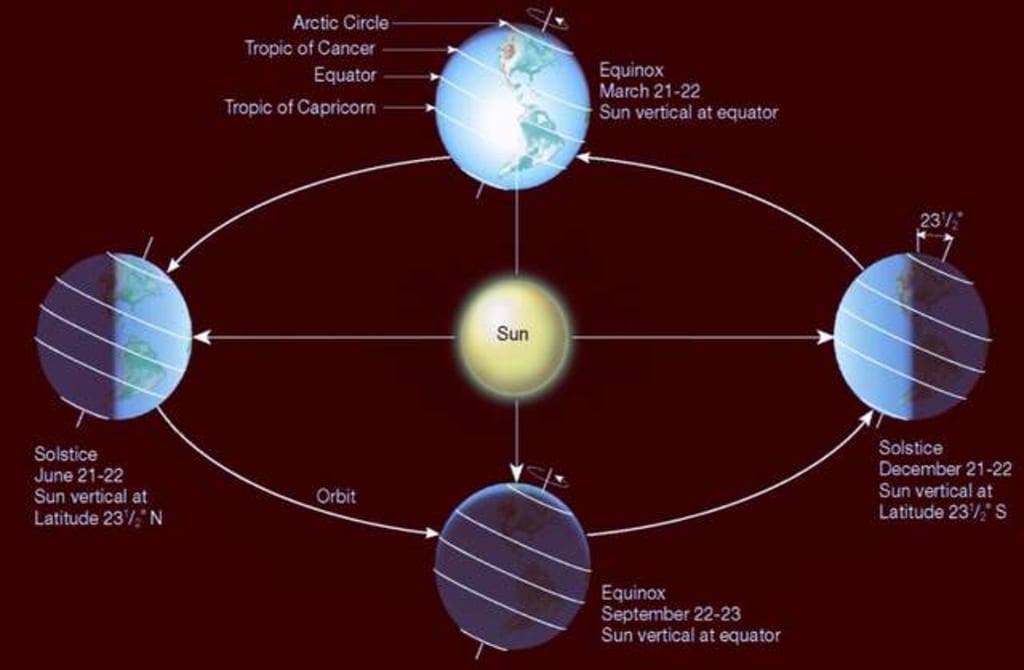We're having summer while the earth is far from the sun? Isn't it supposed to get colder the farther away you are?
Isn't the Earth supposed to get colder as it gets farther away from the sun?

The Earth is always revolving around the Sun. Because the Earth's orbit is elliptical, the distance between the Earth and the Sun is not constant. Sometimes the Earth is farther from the sun, sometimes it is closer.
For those of us who live on Earth, for each revolution of the Earth, we have spent a year and experienced a cycle of seasons. According to common sense, the temperature on Earth should be hotter the closer you are to the sun and colder the farther you are from the sun, so a reasonable guess is that when the hot summer comes, the Earth should be closer to the sun.
But that doesn't seem to be the case, because the Earth orbits to the aphelion every year in early July when we are spending the summer. So the question is, why are we spending summer when the Earth is away from the sun? Shouldn't it be getting colder? Let's talk about this topic.
According to the inverse square law, the intensity of the Sun's radiation is inversely proportional to the square of the distance. It is known that the distance between the perihelion of the Earth's orbit and the Sun is about 152 million kilometers, and the distance between the aphelion and the Sun is about 147 million kilometers. After a simple calculation, it can be concluded that the difference between the solar energy received per unit area of the Earth's surface at aphelion and aphelion is about 6.4%.
From this perspective, the temperature of the Earth should indeed be lower when the Earth is far from the Sun. However, there is another important factor that affects the temperature of the Earth, and that is the angle of incidence of sunlight on the surface of the Earth. To illustrate this point, we can take an ordinary flashlight as an example.
If we turn on the flashlight and let the light from the flashlight shine on the wall, then a spot of light will appear on the wall. At this time we can change the area and brightness of this spot of light by adjusting the angle of incidence of the light on the wall.
A simple experiment shows that when the light is perpendicular to the wall, the area of the spot is the smallest and the brightest. As the angle of inclination of the light increases, the area of the spot is larger and the brightness is lower.
It can be seen that the light received per unit area of the spot and the angle of incidence of the light from the flashlight on the wall are closely related. The smaller the angle of incidence, the more light the spot receives per unit area, and the most light the spot receive per unit area when the light is directed at the wall.
Now, let's imagine the sun as an oversized flashlight, then the angle of incidence of sunlight will vary in different regions of the earth's surface. Why? Because the Earth is a sphere.
Similarly, the direct sunlight area on the Earth's surface receives the most solar energy per unit area and has the highest temperature, while in other areas, the greater the gradient of sunlight, the less solar energy per unit area on the Earth's surface receives, and its temperature decreases.
Since the axial inclination of the Earth's rotation axis relative to the ecliptic plane (i.e. the plane of the Earth's orbit rotation) is about 23° 26′, the direct sunlight area on the Earth's surface will move back and forth on the north-south direction with the Earth's rotation.
We call the northernmost and southernmost boundaries where sunlight can directly hit the Earth's surface the Tropic of Cancer (about 23° 26′ north) and the Tropic of Cancer (about 23° 26′ south), respectively. That is, the area of direct sunlight moves back and forth between these two boundaries during a year. In this case, for a specific area of the Earth's surface
The extent of this variation varies depending on the latitude but can be as high as about 50% near the Tropic of Cancer and the Tropic of Capricorn. In contrast, the difference between the solar energy received per unit area of the Earth's surface at aphelion and aphelion is only about 6.4%, which means that what determines the temperature of the Earth's surface is the angle of incidence of sunlight.
For us living in the northern hemisphere, when the earth is far from the sun (that is, near the aphelion), the area of direct sunlight is actually near the tropic of Cancer. In this case, the surface of the earth in the northern hemisphere receives more solar energy per unit area and is warmer, so we spend the summer.
After reaching the Tropic of Cancer, the area of direct sunlight will begin to move south and the temperature in the Northern Hemisphere gradually drops. When it moves near the equator, we will be in the fall, when it moves near the Tropic of Cancer, we will be in the winter, when the direct sunlight area moves north again to the equator, we will be in the spring, then the summer, and so on.
Yes, that's why there are four seasons on Earth. It is important to note that for humans living in the Southern Hemisphere, when the direct sunlight area is near the Tropic of Cancer, it is summer. In other words, the seasons in the southern hemisphere are exactly the opposite of the northern hemisphere.
As for the area of the earth's surface near the equator, it experiences direct sunlight twice a year, and when the area of direct sunlight leaves the equator, it does not go too far from the equator. So the areas near the equator are warm all year round and there are no distinct seasons.
About the Creator
Milton Braganza
Science without borders, but scientists have the motherland。






Comments
There are no comments for this story
Be the first to respond and start the conversation.